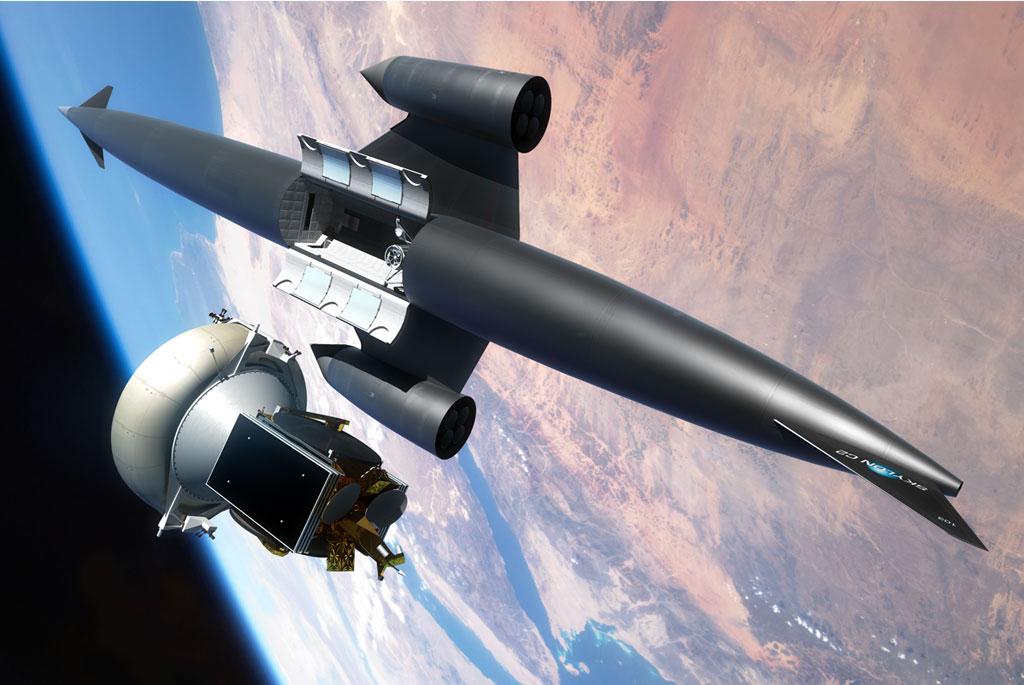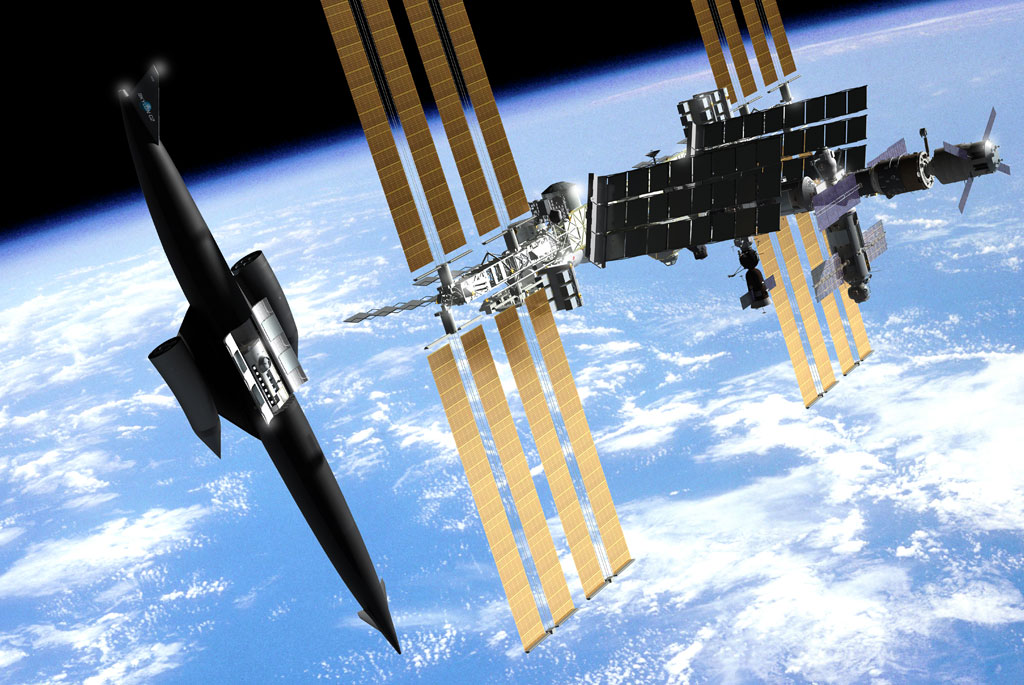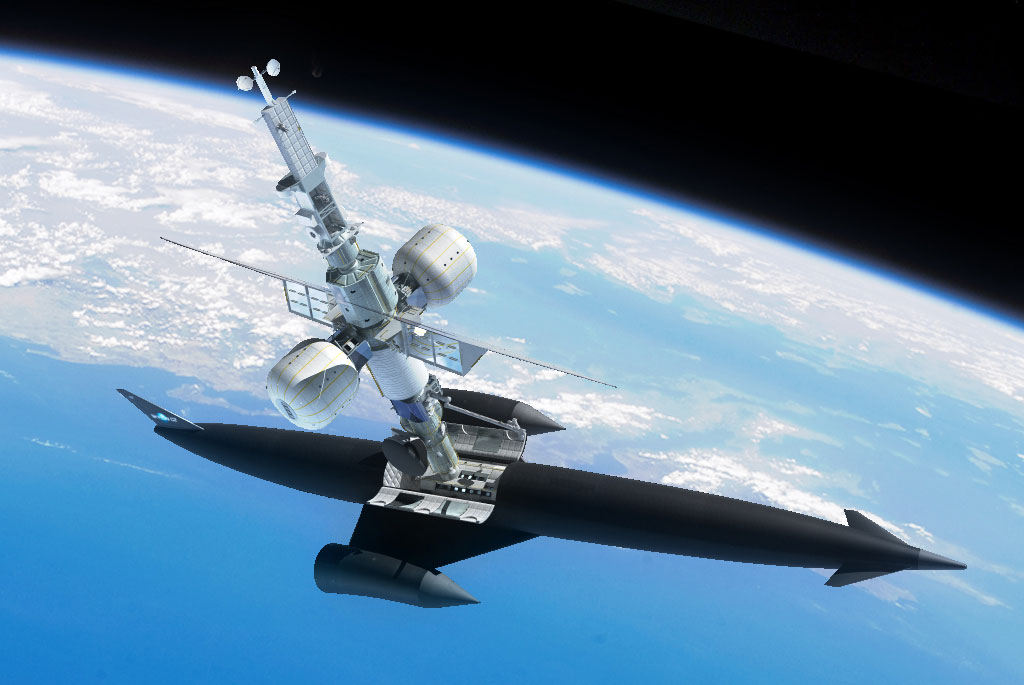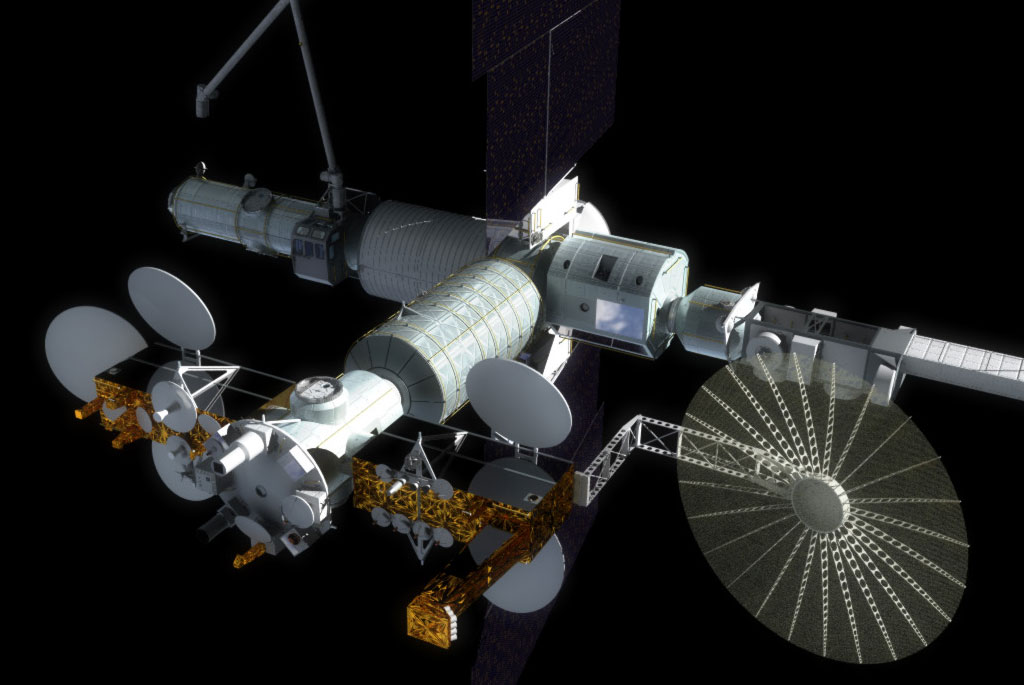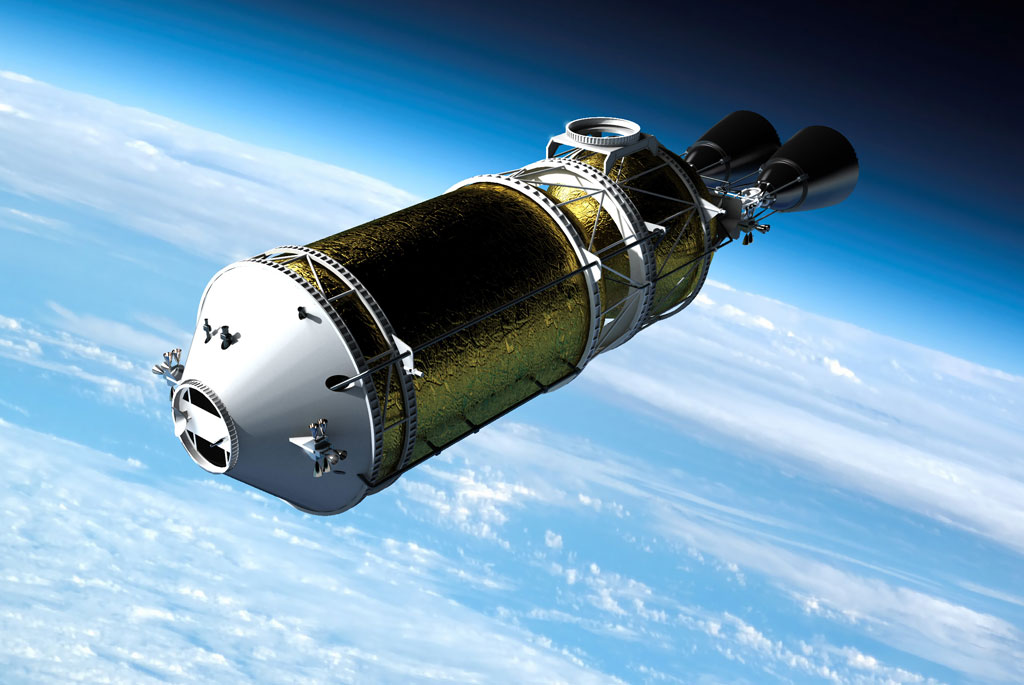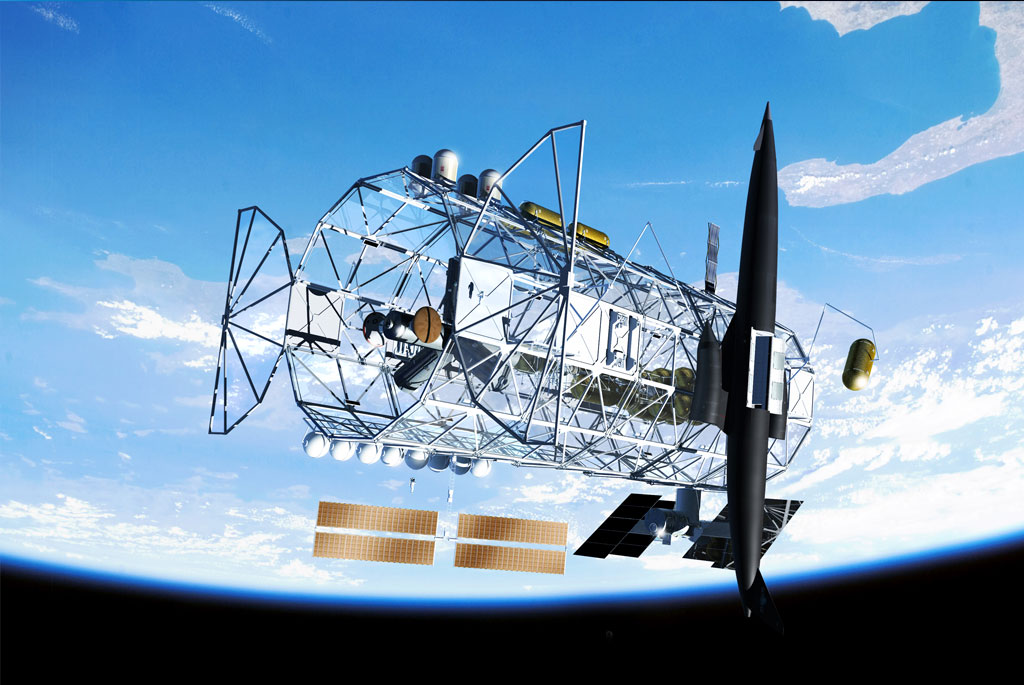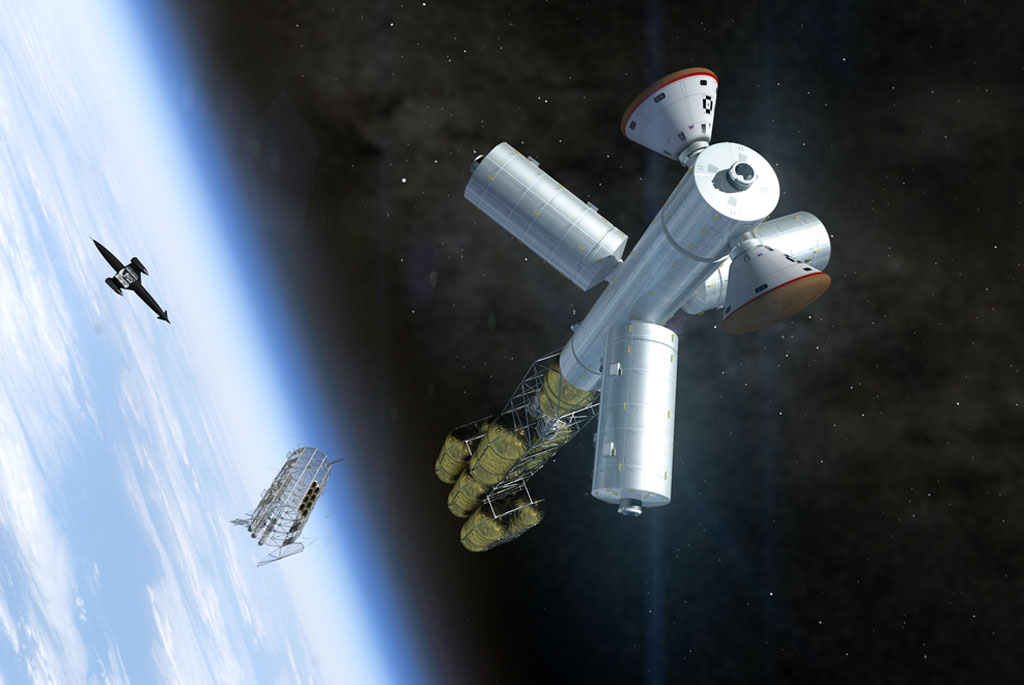Gallery: Visions of Interstellar Starship Travel
SKYLON Engine
The key to SKYLON's success will be the SABRE engine, which employs a revolutionary heat exchanger to chill the incoming air before it is fed to the engines. A Hybrid Air-breathing / Rocket Engine, SABRE represents a huge advance over LACE Technology.
SKYLON Satellite Delivery
Using a recoverable upper stage, the concept spacehip SKYLON can deliver communications satellites to geosynchronous orbit, and then retrieve the upper stage and return it to Earth to be reused for further missions.
SKYLON at ISS
With a Personnel and Logistics module in the payload bay, cargo, supplies and crews could be delivered to the International Space Station by the proposed SKYLON vehicle, extending the outpost's useful life.
SKYLON's Capabilities
Reaction engines have devised a series of modules to demonstrate the proposed spaceship SKYLON's capabilities. Here, a space station has been assembled using docking, habitation, power, airlock and laboratory modules.
Orbiting Hotel
With the addition of two inflatable modules, an orbiting hotel could be created for up to 20 guests by the concept vehicle SKYLON.
SKYLON & Fluyt
With additional modules, a refuelling base could be constructed for ‘Fluyt’ orbital transfer vehicles by the SKYLON craft.
Fluyt Orbital Transfer Vehicles
The Fluyt orbital transfer vehicles could also be used to construct and service large geostationary communications platforms.
Breaking space news, the latest updates on rocket launches, skywatching events and more!
Fluyt
At the end of 2008, a feasibility study began into the use of a space-based Orbital Transfer Vehicle named Fluyt in order to investigate the performance of a reusable rocket stage that would be permanently based in low-Earth orbit.
Orbital Base Station
The concept of an Orbital Base Station (OBS) was studied to demonstrate that large, highly modular structures could be built in low-Earth orbit, providing accommodation for the crews, protection from orbital debris, continuous internal lighting and propellant storage. Such a facility would enable large ships for the exploration of the moon and Mars to be constructed.
Troy Mission
The proposed Troy mission is envisaged to be performed in two parts: an unmanned, precursor mission, and the later manned mission. Using SKYLON, the elements for the Troy ships are delivered to an Orbital Base Station, where the components are assembled.
Mann, a former contributor to Space.com, is a Hungary-based space illustrator and a graphical engineer for Project Icarus, which is involved with researching possibilities for future interstellar travel. He's a freelance web designer, graphic designer, artist and illustrator, specializing in the areas of aerospace and astronomy.

